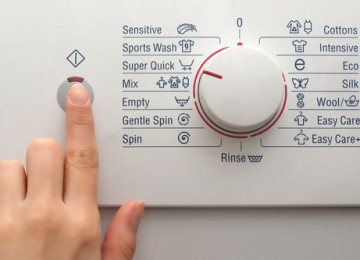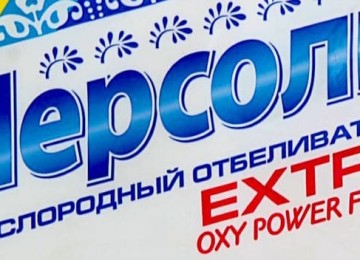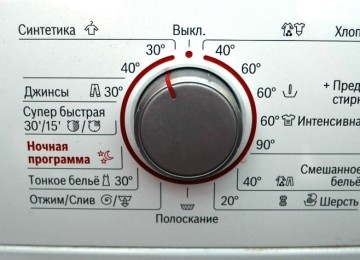 Nowadays, not every housewife bothers herself with the question: how to starch laundry in a washing machine? This procedure is a thing of the past. There are several reasons for this. This is caused, first of all, by the fact that new washing technologies have appeared. Almost every family has smart washing machines And effective universal laundry detergents and rinsing, which took on a huge part of the labor-intensive manual work.
Nowadays, not every housewife bothers herself with the question: how to starch laundry in a washing machine? This procedure is a thing of the past. There are several reasons for this. This is caused, first of all, by the fact that new washing technologies have appeared. Almost every family has smart washing machines And effective universal laundry detergents and rinsing, which took on a huge part of the labor-intensive manual work.
Most washing machines have a “starching” function. However, some “conservative” housewives are not satisfied with this, and they want to process their laundry using outdated methods. But really, it’s much more pleasant to sleep on starched linen and at the same time feel the delights of fresh-smelling bedding that squeaks from cleanliness.
Beneficial factors of starched linen
In the last century, it was believed that starched linen has the following positive qualities:
- clothes and bedding become dense, therefore, they wear out more slowly and last longer;
- the starch film creates a barrier to contaminants and does not allow them to penetrate deep into the tissue structure. Thus, fabric items can be washed easier and faster.If such laundry is soaked in cold water before washing, the starch paste will dissolve and take away the dirt with it. After this, the washing will be much better;
- starched items acquire additional strength, retain their shape well, and most importantly wrinkle less;
- Since the laundry becomes less dirty, the frequency of washing increases. Thus, starched linen wears out less and lasts longer;
- Starched items are fresh and smell delicious.
However, if starched linen has so many positive qualities, why is this process not popular today?
The answer is quite simple - doctors do not recommend it. Starched items, saturated with starch, form a film on the surface of the fabric. It sharply reduces hygroscopicity. Thus, the fabric does not allow air and moisture to pass through.
General rules for starching
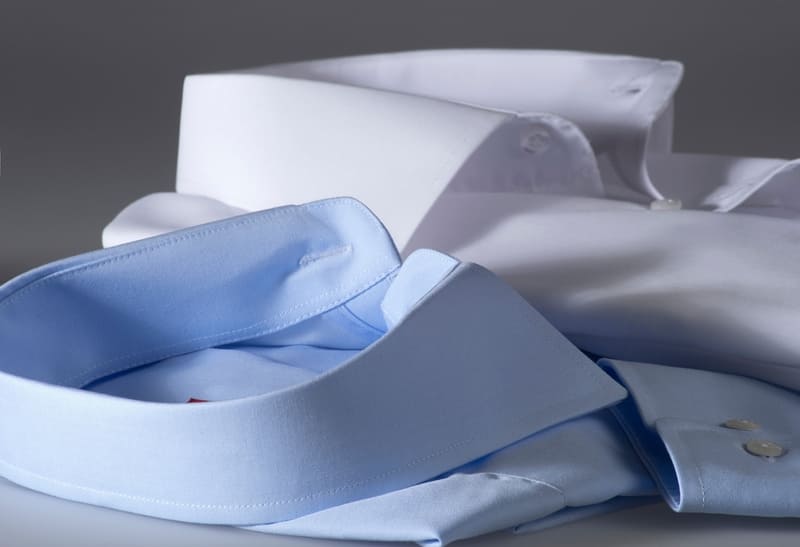
First of all, you should remember that it is not recommended to starch things made from synthetic fibers, as well as silk. Products made from flax, cotton, satin, calico, cambric or chintz are subject to starch treatment. Linen starches only after washing and rinsing, that is, in a pure state.
There are three degrees of starch treatment of linen:
- delicate processing. First of all, bed linen is subject to this treatment. Typically, for delicate processing, the paste is prepared at the rate of 1 spoon of starch per 1 liter of water;
- soft processing.It is mainly used for underwear (blouses, shirts, blouses, T-shirts, dresses, etc.). Such things should be soft and pleasant to the touch, so the concentration of starch remains practically the same as with delicate processing;
- medium processing. This degree is suitable for tablecloths, napkins, lace or curtains. The proportion is approximately 2 tablespoons of starch per 1 liter of water;
- hard processing. Suitable for standing collars and petticoats. For this treatment, the solution is prepared at the rate of 1 spoon of borax and 70 grams of starch per 250 ml of warm water.
Conventional starch processing
The technology algorithm for conventional (manual) starch processing is as follows:
- starch paste is prepared;
- the starch solution is heated to a temperature of 30-35 degrees and the laundry is immersed in it. At the same time, it must be fluffy, otherwise the processing of the fabric will be uneven, and its individual sections will be unsaturated;
- After impregnation, the laundry is left for 10-20 minutes to soak. This process can be accelerated by vigorous rinsing;
- the resulting creases and folds in the fabric are removed. To do this, the laundry is wrung out by hand, followed by vigorous shaking;
- dry the laundry in a straightened state.

Starch processing in a washing machine
Starching laundry in automatic washing machine quite simple. The procedure is as follows:
- a paste is prepared. The solution is prepared in the same way as with manual technology.To make work easier, you can use specialized products that have a starching effect;
- The operating mode of the machine is set to “Rinse”;
- the prepared starch paste is poured into the tray compartment for rinse aid;
- the machine turns on in the previously set mode;
- After finishing the processing process, the laundry is removed from the drum and shaken thoroughly.
To ventilate the drum, the hatch door does not close immediately. It is recommended to dry starched laundry outdoors or in a well-ventilated area.
It is prohibited to use other liquids during the starching process, including rinse aids.
Preparing the paste
The starch solution is prepared from potato, corn, rice or wheat starch. The use of one starch or another does not matter, but it should be remembered that the potato solution can leave stains on white linen.
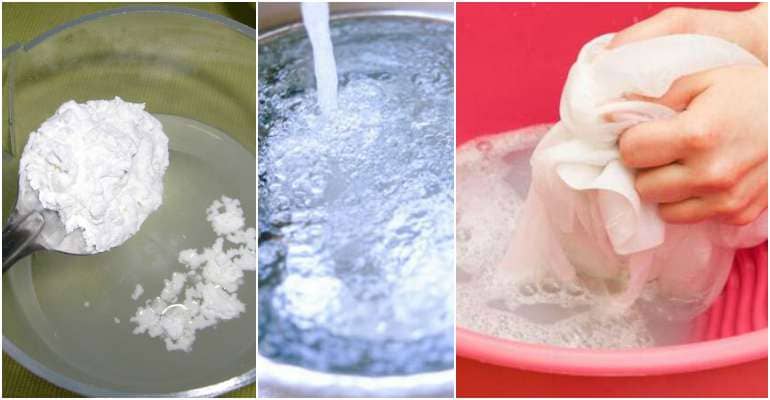
In addition, if prepared incorrectly, the fabric may acquire a yellowish-dirty tint. However, despite some disadvantages, most housewives still use potato starch. This is due to the fact that it has the following positive qualities:
- starch powder dissolves quickly with water;
- the powder is easy to prepare and can be easily brewed with boiling water;
- quickly acquires the required thickness;
- the linen takes on a pleasant color with a snow-white or pale blue tint.
Rice and wheat starch can be used in practice, but due to their relatively high cost they are not widely used.
The procedure for preparing starch paste is as follows:
- First, the starch is diluted in cold water. The ratio of the volume of water to the amount of powder depends on the degree of starching (delicate, soft, medium, hard);
- if the starch is of poor quality (with a grayish tint), then after it has dissolved, it should stand for 10-20 minutes;
- floating particles of contaminants are merged with water;
- the remaining dirt on the top of the starch is removed with a spoon;
- Cold water is added to the purified starch and the contents are thoroughly mixed. For final cleaning, the diluted starch is filtered through a gauze filter;
- in another container, water is boiled, into which the purified paste is poured in a thin stream, with continuous stirring;
- The resulting mass is brewed over low heat. The process is considered complete if the paste takes on the appearance of transparent jelly;
- the prepared paste is given time to cool;
- The composition is checked for the absence of lumps. If they are present, then the paste is filtered through a fine sieve.
Currently, ready-made synthetic starches can be purchased in stores. Such formulations may be in the form of rinses, sprays or aerosols.
Liquids are used at the rinsing stage, and sprays and aerosols during the ironing period. The procedure for use is described in the instructions for use.
Before direct use, the starch mass is diluted with cold water to the required concentration.
Helpful Tips:
- in order for the starched linen to acquire a bluish tint, blue is added to the paste;
- To ensure that the laundry acquires a glossy shine after ironing, add a spoonful of table salt to the solution. It will also protect laundry from freezing when drying in frosty air;
- To prevent laundry from sticking to the sole of the iron, add a few drops of turpentine to the starch paste.
Conclusion
Thus, starching laundry is not at all difficult: the time is minimal, the costs are insignificant. However, it is advisable to decide whether such a procedure is necessary, or be content with the pleasant sensations, or take advantage of doctors’ recommendations and refuse starch processing.
On the other hand, if manual or machine processing seems too labor-intensive, then you can do it easier. Prepare a weak starch solution, pour it into a spray bottle and spray the laundry before ironing.







